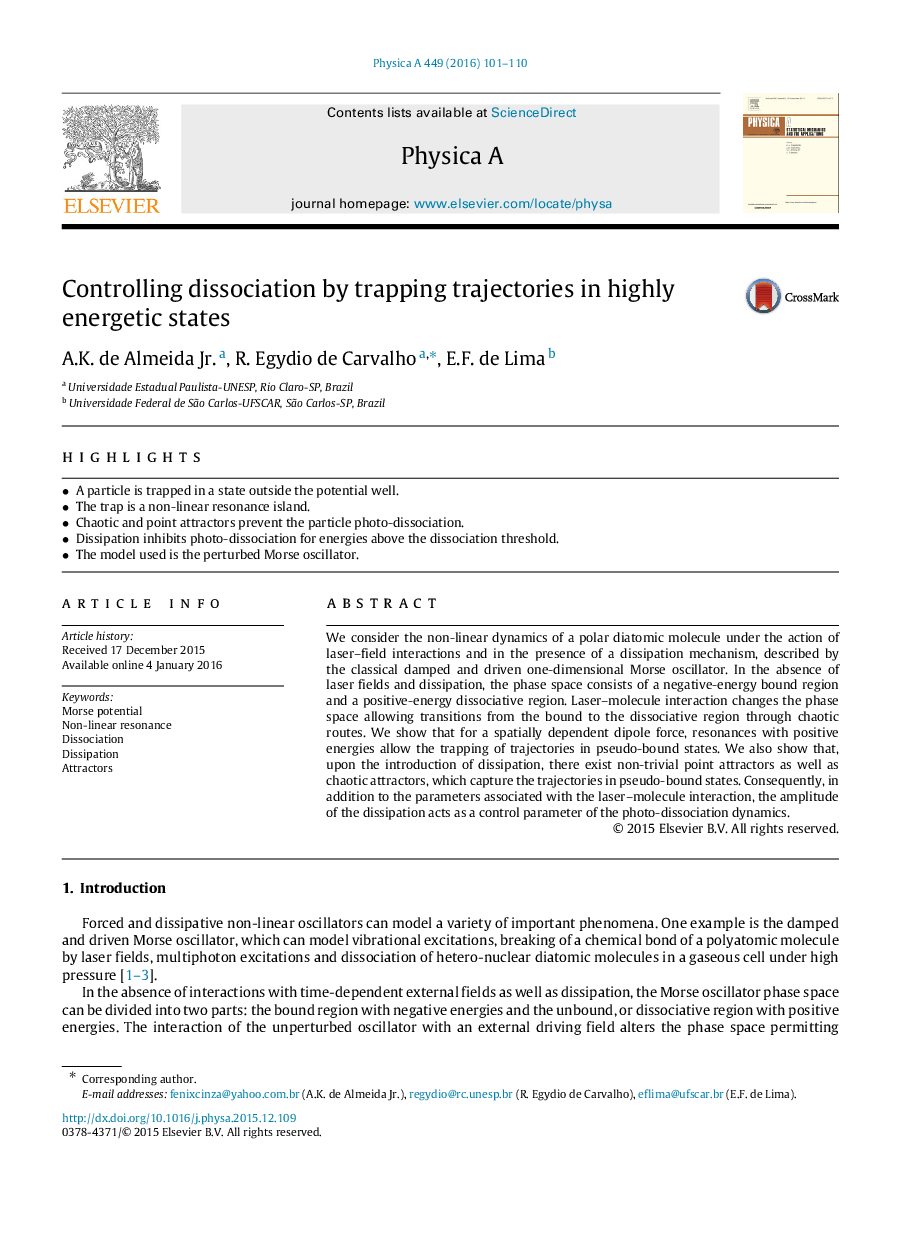| Article ID | Journal | Published Year | Pages | File Type |
|---|---|---|---|---|
| 973692 | Physica A: Statistical Mechanics and its Applications | 2016 | 10 Pages |
Abstract
We consider the non-linear dynamics of a polar diatomic molecule under the action of laser-field interactions and in the presence of a dissipation mechanism, described by the classical damped and driven one-dimensional Morse oscillator. In the absence of laser fields and dissipation, the phase space consists of a negative-energy bound region and a positive-energy dissociative region. Laser-molecule interaction changes the phase space allowing transitions from the bound to the dissociative region through chaotic routes. We show that for a spatially dependent dipole force, resonances with positive energies allow the trapping of trajectories in pseudo-bound states. We also show that, upon the introduction of dissipation, there exist non-trivial point attractors as well as chaotic attractors, which capture the trajectories in pseudo-bound states. Consequently, in addition to the parameters associated with the laser-molecule interaction, the amplitude of the dissipation acts as a control parameter of the photo-dissociation dynamics.
Related Topics
Physical Sciences and Engineering
Mathematics
Mathematical Physics
Authors
A.K. de Almeida Jr., R. Egydio de Carvalho, E.F. de Lima,
